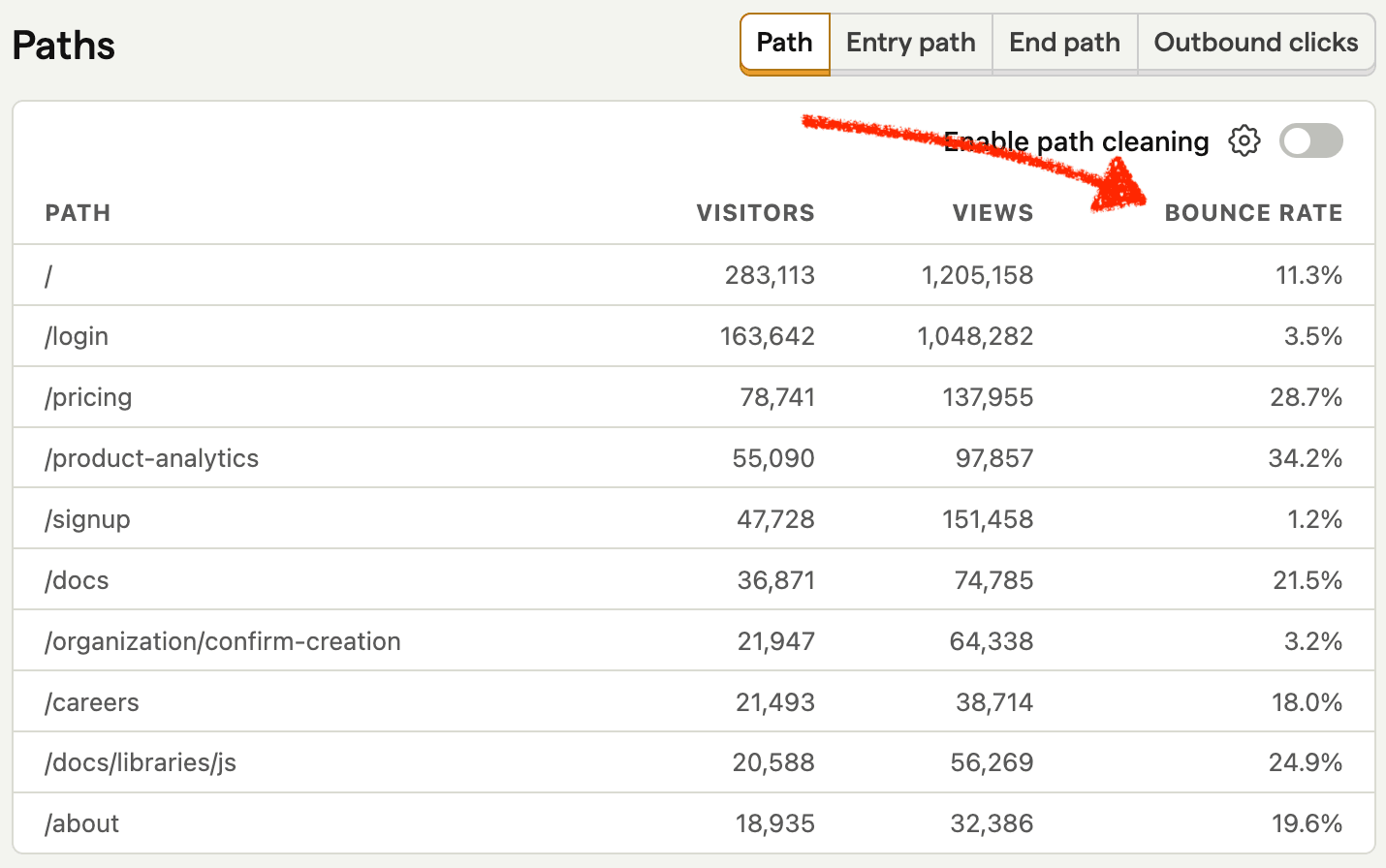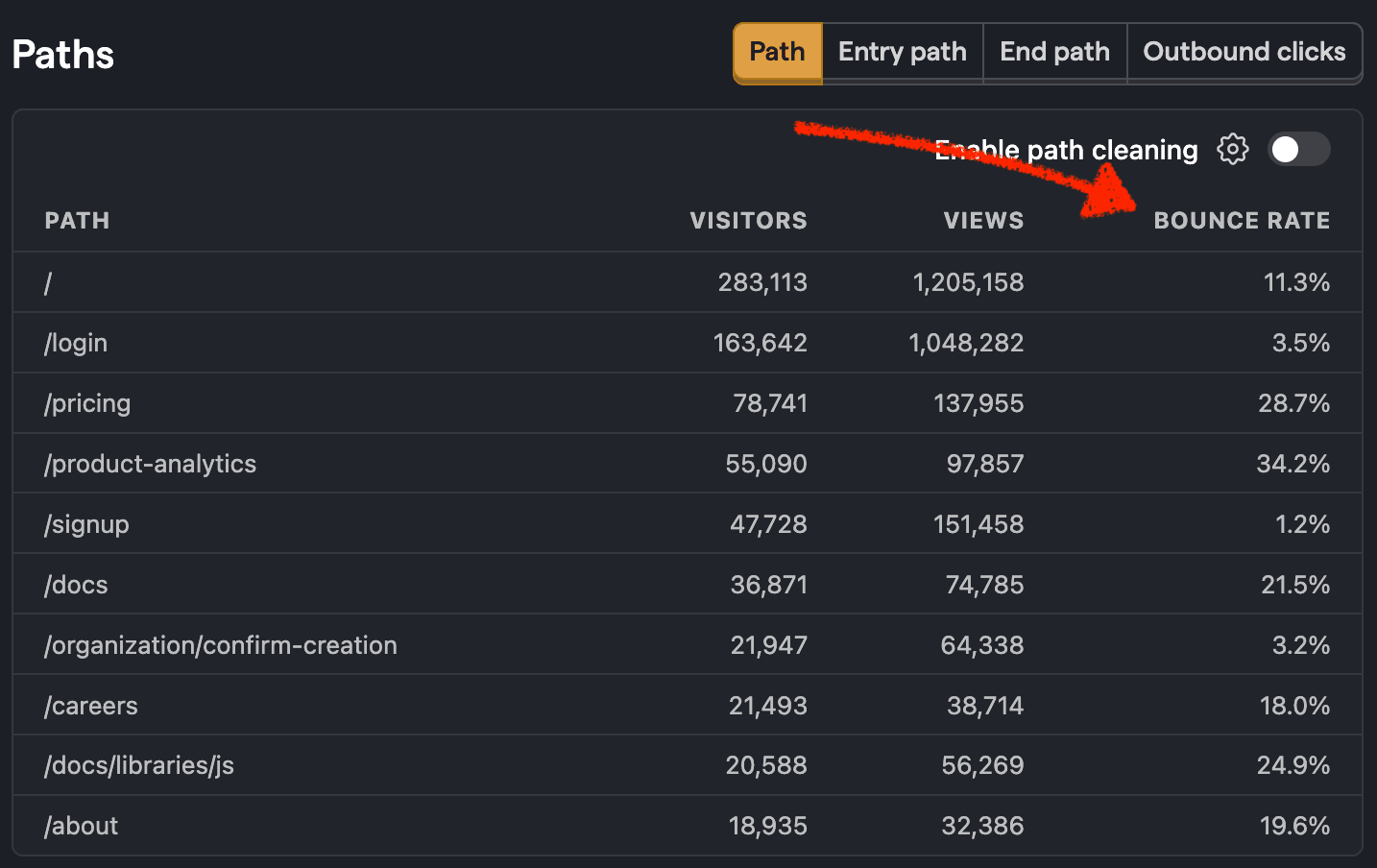How to calculate bounce rate
Contents
Bounce rate is the percentage of users who visit a page and then leave without taking any further actions. It is a popular marketing metric showing the relevance and engagement of content for site visitors. This tutorial shows you how to calculate bounce rate in PostHog.
To get started, you need to install PostHog's web snippet or JavaScript SDK. Then ensure the following settings are enabled in your project settings:
How do we define bounce rate?
Your bounce rate is the percentage of sessions that resulted in a bounce. We define a bounce as a session where a visitor:
- spent less than 10 seconds on a page
- did not autocapture any events
- only had one pageview
How does Google Analytics 4 calculate bounce rate? Google Analytics uses a similar definition, where the bounce rate is the percentage of sessions that were "not engaged." An engaged session is defined as a session that lasts longer than 10 seconds, has a conversion event, or has at least 2 screen or pageviews.
Viewing bounce rate with Web analytics
PostHog's web analytics makes it easy to see the bounce rate for a given page on your website. Navigate to your web analytics dashboard, and you'll find the bounce rate listed alongside each page in the paths section.


Calculating bounce rate with SQL insights
You can also use SQL insights to calculate bounce rate using the sessions table. To create a new SQL insight, go to the Product analytics tab, click new insight, then go to the SQL tab. This is where we write our SQL statements.
We can use $is_bounce to find sessions that meet the default bounce criteria mentioned above. The value of $is_bounce is either 1 or 0, so we can take the average for all sessions to get the bounce rate. We multiply by 100 to view it as a percentage and round to a single decimal place.
Calculating bounce rate for a specific page
To find the bounce rate for sessions that begin on a specific page, add a where clause to the query with the $entry_pathname. For example, this query will find the bounce rate for sessions that started on the home page:
The query above will only work for sessions that started on the home page. If we want to find the bounce rate for the /pricing page (not only for sessions that started on that page), we'll need to join on the events table and filter for pageviews that match the URL.
Using different bounce criteria
For more granular control, we can redefine which sessions constitute a bounce with our own criteria. For example, we could find all sessions that had a single pageview and did not capture any events, but disregard the session duration.
Calculating bounce rate with raw session replay data
When session replay is enabled, we can also calculate the bounce rate using the raw_session_replay_events table. This allows us to use different criteria that isn't available in the session data, like click_count, keypress_count, and mouse_activity_count. We can find these in the database data management tab under the raw_session_replay_events table.
We can use a multiIf statement to check conditions and set new criteria for calculating bounce rate. For example, if we wanted to count bounce rate as the percentage of sessions with fewer than 3 clicks, we can use click_count < 3 like this:
We can add more criteria to our multiIf statement as well. For example, if we wanted to count bounce rate as the percentage of sessions with fewer than 3 clicks and 2 keypresses or less than 10 seconds, we can use click_count < 3 AND keypress_count < 2 OR active_milliseconds < 10000 like this:
Further reading
- Calculating average session duration, time on site, and other session-based metrics
- Using SQL for advanced time and date filters
- Using SQL for advanced breakdowns

Subscribe to our newsletter
Product for Engineers
Read by 100,000+ founders and builders
We'll share your email with Substack
PostHog is an all-in-one developer platform for building successful products. We provide product analytics, web analytics, session replay, error tracking, feature flags, experiments, surveys, LLM analytics, data warehouse, CDP, and an AI product assistant to help debug your code, ship features faster, and keep all your usage and customer data in one stack.










